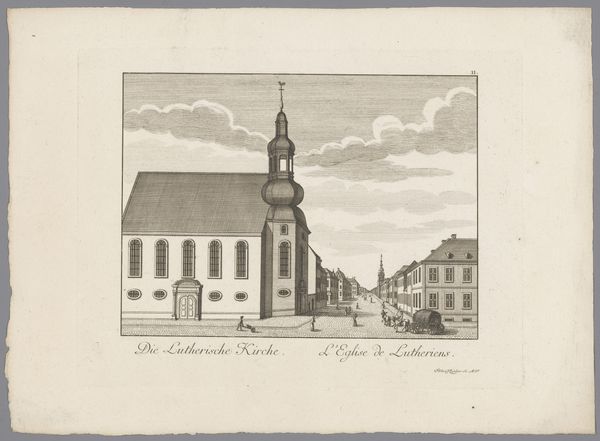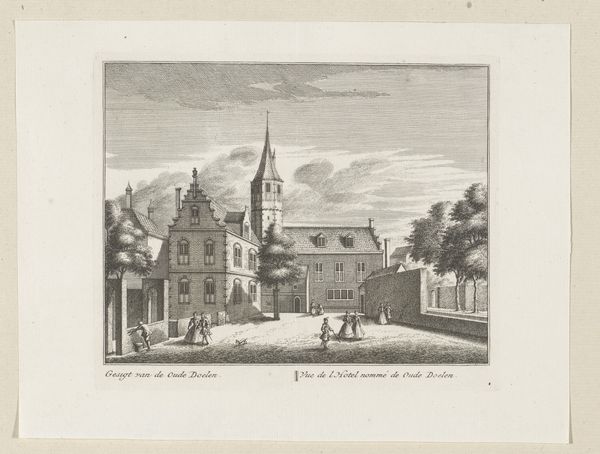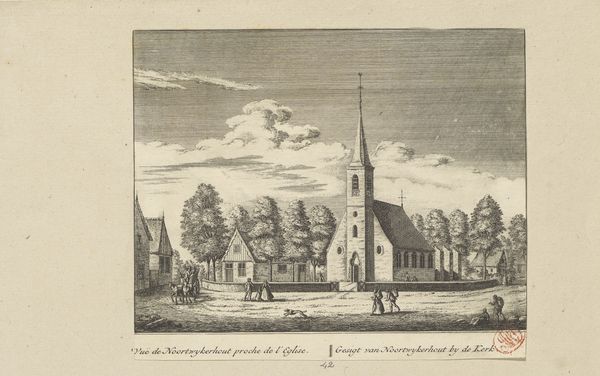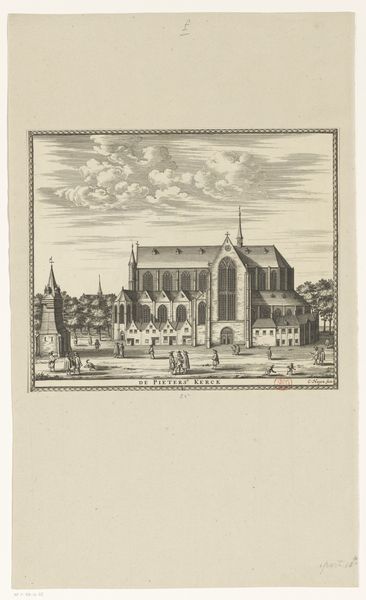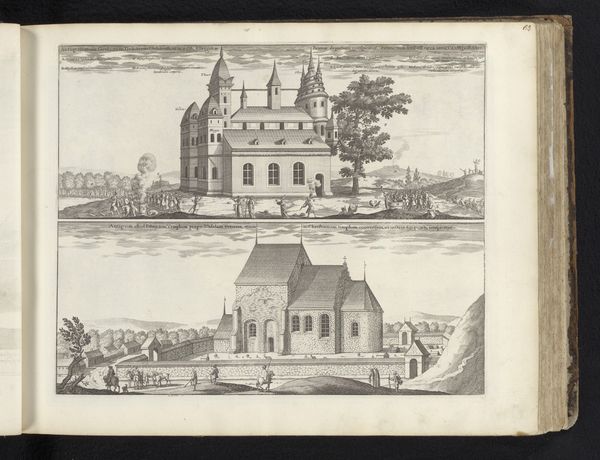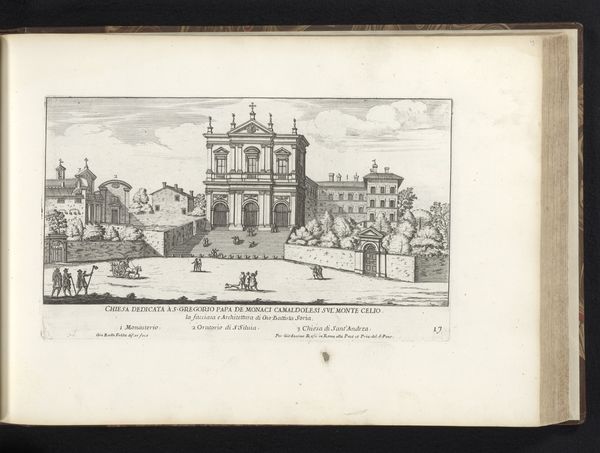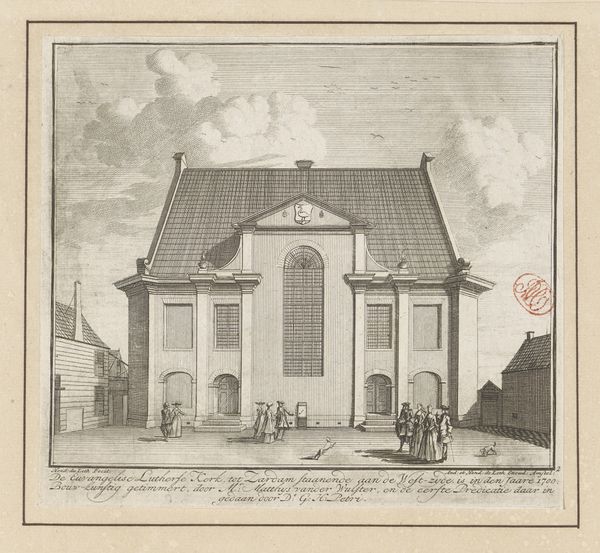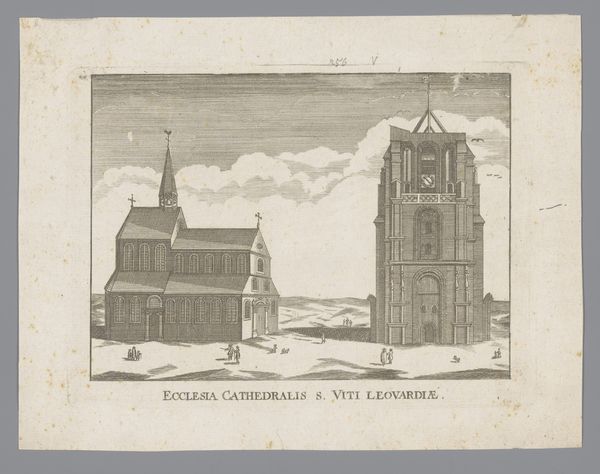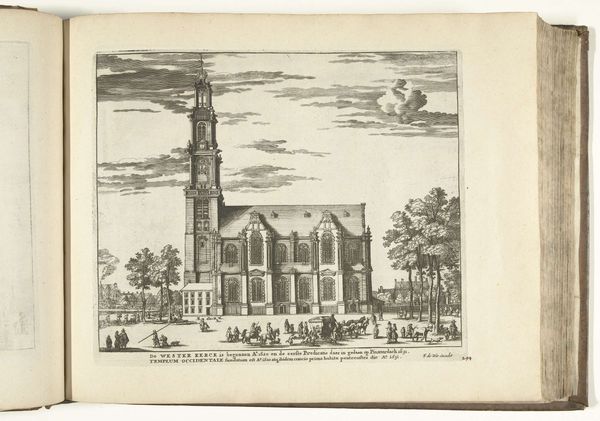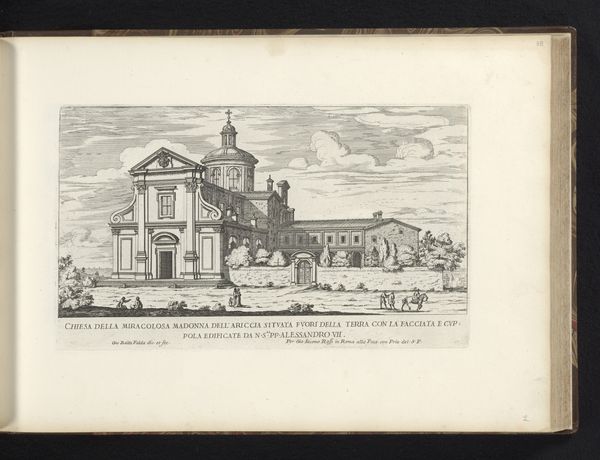
Dimensions: height 212 mm, width 279 mm
Copyright: Rijks Museum: Open Domain
Curator: This engraving by the Klauber brothers, circa 1782, offers a "View of the Reformed Church in Mannheim," as the title declares in both German and French. The print itself resides here in the Rijksmuseum. Editor: Immediately, the crisp lines suggest order and perhaps the prevailing rationality of the late 18th century. But there's a curious rigidity; it feels almost like a stage set. Curator: As an engraving, the piece involves a deliberate process of planning and labor, doesn't it? From design transfer to the selection of metal and tools, etching demands a complex orchestration of handcraft. I wonder what their workshop was like? Editor: And what of this austere Reformed Church rendered with such exacting detail? A temple of reason itself, perhaps? Its symmetry and stark façade speaks volumes of the symbolic role of Protestantism. The sky even seems to hold its breath. Curator: Did this reflect broader construction techniques during the 18th-century? Were certain materials more prevalent in Germany than in France, dictating aesthetic choices beyond the purely symbolic? Was their workshop arranged on some version of an assembly line? Editor: Notice how the small figures seem almost ceremonial as they move about the space. What narratives were these individuals enacting in their daily routines against the backdrop of religious power? Their presence humanizes the scene, hinting at deeper societal values. The composition draws your eye upward to that dominating bell tower too. Curator: And speaking of the people, how widely available and consumed were prints such as this? This engraving isn't grand scale; did they perhaps cater more to middle-class tastes and purchasing power than, say, large-format paintings patronized exclusively by the elites? Editor: It serves almost as a secular icon, wouldn't you say? The precision of the architecture, repeated along with that small crowd, functions to stabilize a rapidly changing world, offering a reassuring image of permanence. Curator: The act of replicating this landscape into affordable prints brings places like Mannheim to a new audience. The implications of reproduction and democratization in experiencing these sacred places—a new kind of industry indeed. Editor: Thinking about it, seeing such a rigidly symmetrical image invites considering that behind the apparent harmony there is something hidden. These figures going to service, this architectural aesthetic… perhaps it covers for conflicts or questions regarding the world they occupy. Curator: Thinking about the economic distribution as much as its appearance and the religious context allows a deeper appreciation for its making and consumption in late 18th century Europe. Editor: Absolutely, considering it less as mere topography and rather a statement on values helps us understand how powerful symbols persist.
Comments
No comments
Be the first to comment and join the conversation on the ultimate creative platform.
